Depression and trauma are not signs of weakness but deeply intertwined disruptions in the brain’s stress and emotion circuits, shaping thoughts, feelings, and even the body. Trauma often “locks” the brain into hypervigilance, while depression dampens motivation, hope, and clarity—yet both conditions can be healed. Understanding how the amygdala, hippocampus, and prefrontal cortex respond to stress reveals that there are no simple on/off switches, but rather patterns that can be rewired through therapy, lifestyle medicine, resilience practices, social connection, and meaning-making. From childhood bullying to adult burnout and late-life loneliness, depression spans all ages, but it need not define anyone’s life. Healing is possible through a blend of science, community, and spirit, pointing us toward transformation rather than despair.
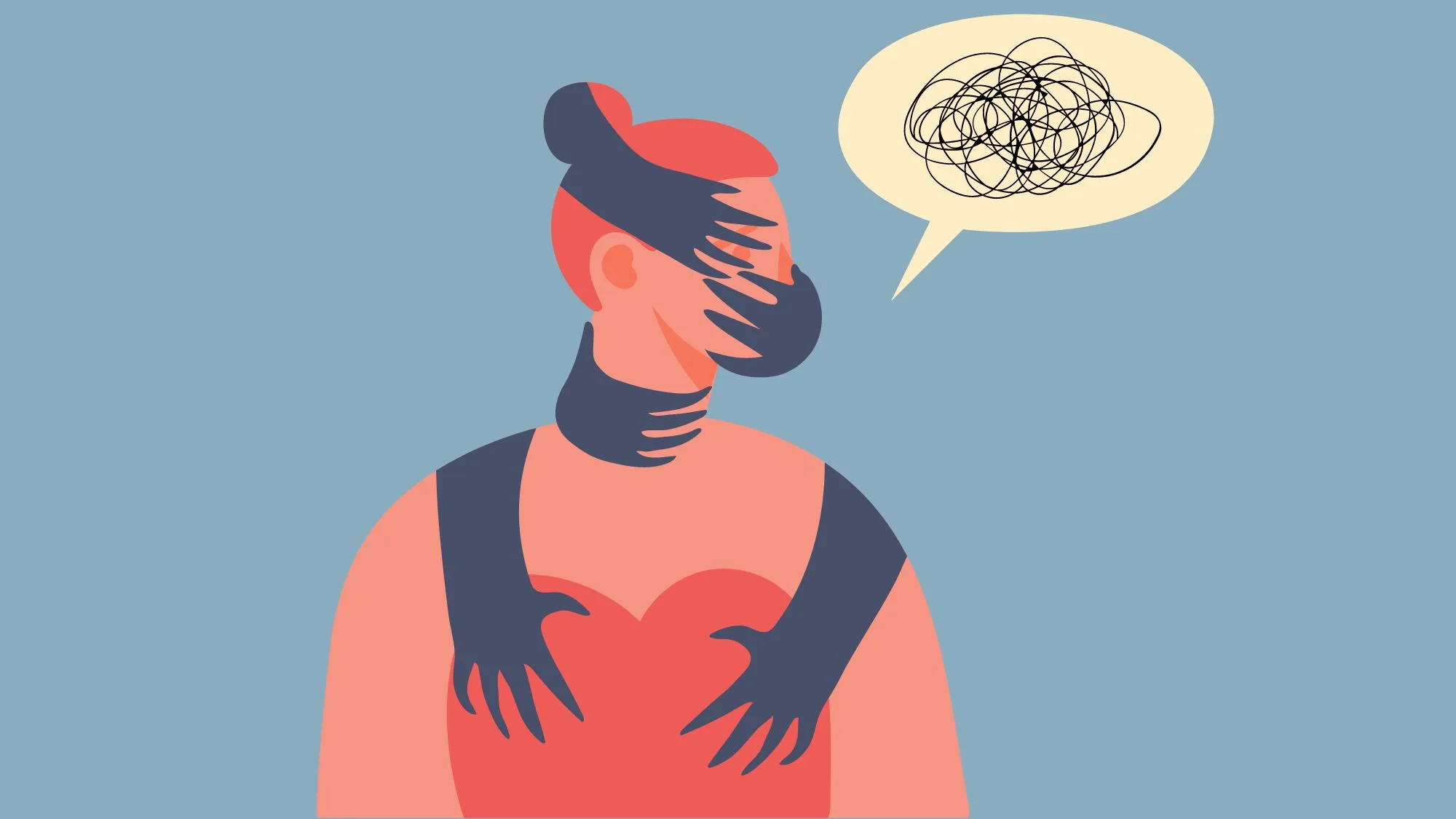
Depression and Trauma: The Brain’s Hidden Battle and the Road to Recovery
Introduction
Depression and trauma are two words that are often whispered in private, spoken hesitantly in clinics, or misunderstood entirely in daily conversations. Yet they sit at the very center of human suffering and resilience. They affect not only the mind but also the body, relationships, and even the sense of who we are. To dismiss them as simple “moods” or “weaknesses” is to overlook the profound reality: depression and trauma are deeply woven disruptions in the brain, the psyche, and the lived human experience.
Intended Audience
This article is crafted for multiple groups who encounter these challenges in different ways:
- Individuals who are personally navigating stress, trauma, or depression and are searching for clarity and direction.
- Caregivers, educators, and health practitioners who support others and need a language that bridges compassion with science.
- Students and seekers of psychology, neuroscience, and spirituality who wish to understand these phenomena not just clinically, but holistically.
Purpose of the Article
The aim is not merely to define terms but to make sense of complex experiences in ways that feel both scientifically grounded and humanly relatable. Specifically, this article seeks to:
- Explain depression and trauma in simple, digestible language without losing scientific accuracy.
- Explore the brain’s circuitry and examine whether there are “switches” for trauma and depression.
- Offer practical strategies to handle trauma and prevent its slide into depression.
- Highlight recovery pathways that combine medical science, daily lifestyle shifts, and meaning-making practices rooted in philosophy and spirituality.
Core Thesis
Depression and trauma are not mere “mental states” to be willed away or silenced. They represent intertwined disruptions of brain circuits, thought patterns, and lived life experience. Trauma heightens the sensitivity of the brain’s fear systems (the amygdala), weakens memory and contextual processing (the hippocampus), and blunts rational control (the prefrontal cortex). These changes can lock a person in cycles of fear, numbness, and hopelessness.
The good news is this: there is no single “on/off switch” that condemns someone to lifelong suffering. Instead, there are levers — practices, treatments, and mindsets — that can dim the hyperactive alarms of trauma and rekindle the circuits of hope, resilience, and purpose. The path is not instant, but it is real and achievable.

II. Understanding Depression
Depression is one of the most widely spoken about — and yet, most misunderstood — mental health conditions. Too often it is dismissed as “feeling sad” or “being weak.” This oversimplification not only trivializes the suffering of those who live with depression but also prevents meaningful conversations about its true nature. To understand depression, we must first distinguish it from ordinary sadness, recognize its various forms, and grasp how it manifests across mind and body.
Clinical Definition vs. Everyday Sadness
Everyone experiences sadness — it is a normal, healthy emotion in response to loss, disappointment, or life’s inevitable challenges. Sadness is transient and usually eases with time, comfort, or positive experiences.
Depression, however, is more than sadness. Clinically, depression is defined as a persistent and pervasive mood disturbance that lasts at least two weeks (often far longer) and interferes with daily functioning. Unlike sadness, it does not simply pass with time or good company. It colors every aspect of life, dulls joy, and often feels like an unshakable fog.
In short: sadness is a wave; depression is an ocean you feel unable to swim out of.
Types of Depression
Depression is not a single condition but a spectrum of related disorders:
- Major Depressive Disorder (MDD):
- Intense episodes of low mood, hopelessness, and disinterest in life lasting weeks or months.
- Severe enough to impair work, relationships, and self-care.
- Persistent Depressive Disorder (Dysthymia):
- A chronic, lower-grade depression that lasts for years.
- The person may not even recognize it as depression because it becomes “their normal.”
- Trauma-Related Depression:
- Depression that emerges after traumatic experiences, often linked with Post-Traumatic Stress Disorder (PTSD).
- Unlike general depression, it may involve flashbacks, nightmares, and emotional numbing.
- Situational vs. Endogenous Depression:
- Situational depression arises from external stressors (job loss, divorce, bereavement).
- Endogenous depression is more internally driven, linked to biological or genetic predispositions.
Recognizing these variations helps in tailoring treatments — what works for trauma-related depression may differ from what helps chronic dysthymia.
The Symptoms Triad
Depression affects the whole person, not just emotions. Its manifestations can be grouped into three dimensions:
- Emotional Symptoms:
- Persistent sadness, hopelessness, guilt, irritability, loss of pleasure.
- Emotional “flatness,” where even happy events feel muted.
- Cognitive Symptoms:
- Poor focus and concentration.
- Indecisiveness and difficulty planning.
- Ruminative thoughts — replaying mistakes or fears endlessly.
- Physical Symptoms:
- Fatigue, even after adequate rest.
- Sleep disturbances (insomnia or oversleeping).
- Appetite changes (loss or overeating).
- Psychosomatic pain — headaches, backaches, stomach issues with no clear medical cause.
This triad makes depression particularly insidious: it blurs the line between mental and physical illness, leaving many sufferers misunderstood or misdiagnosed.
Why Depression is Misunderstood
Despite being one of the most common mental health conditions, depression remains cloaked in stigma and misconceptions:
- It is not weakness. Depression is not a character flaw but a health condition that requires treatment and support.
- It is not laziness. The fatigue and indecision are neurobiological symptoms, not failures of willpower.
- It is not “all in the mind.” Depression involves real changes in brain chemistry, hormonal regulation, and stress-response systems.
At its core, depression is a biopsychosocial phenomenon — arising from the interplay of brain biology, personal psychology, and social environment. It can be treated effectively, but only when understood for what it truly is: not a weakness to hide but a condition to heal.

III. Understanding Trauma
If depression is the fog that settles in, trauma is often the lightning strike that precedes it. Trauma is not defined by the event alone but by its impact on the individual — the way it overwhelms the nervous system, shatters the sense of safety, and alters how the brain and body respond to the world.
Definition
At its core, trauma can be described as an overwhelming experience that exceeds a person’s natural coping capacity. It is not just remembered as a story in the mind but imprinted in the body, rewiring stress responses and leaving traces long after the event itself has passed. Trauma bends the nervous system toward hypervigilance (always on guard) or numbness (emotionally shut down), disrupting daily life in ways both subtle and severe.
Types of Trauma
- Acute Trauma
- Stemming from a single, sudden event such as an accident, natural disaster, or assault.
- Its intensity may subside with time, but in some cases, it anchors into memory and triggers lasting symptoms.
- Chronic Trauma
- Emerging from prolonged, repeated stressors: ongoing abuse, domestic violence, workplace harassment, or life in war zones or extreme poverty.
- Unlike acute trauma, this is drip-fed into the nervous system, slowly reshaping how one perceives relationships, safety, and self-worth.
- Complex Trauma
- Multiple, layered traumas, often beginning in childhood and involving betrayal or neglect by caregivers.
- Particularly damaging because it occurs during the brain’s developmental years, when trust, attachment, and identity are being formed.
- Collective Trauma
- Trauma experienced by groups or societies — pandemics, forced displacement, genocide, communal violence, or systemic oppression.
- Its effects ripple across generations, shaping culture, identity, and community well-being.
The “Invisible” Nature of Trauma
One of trauma’s greatest challenges is its invisibility. Unlike a physical wound, trauma is often hidden — both from others and from the survivor themselves. Its effects are not always spoken but stored in the body:
- Muscles tighten unconsciously.
- The heart races at the sound of certain triggers.
- Sleep becomes fragmented by nightmares.
- The brain encodes traumatic memories differently, often as fragments of sensation or emotion rather than coherent narratives.
This is why someone who has endured trauma may feel they are “overreacting” to small triggers or reliving the event as if it were happening again. The past is not filed away neatly in the brain but intrudes on the present, shaping behavior, relationships, and health.
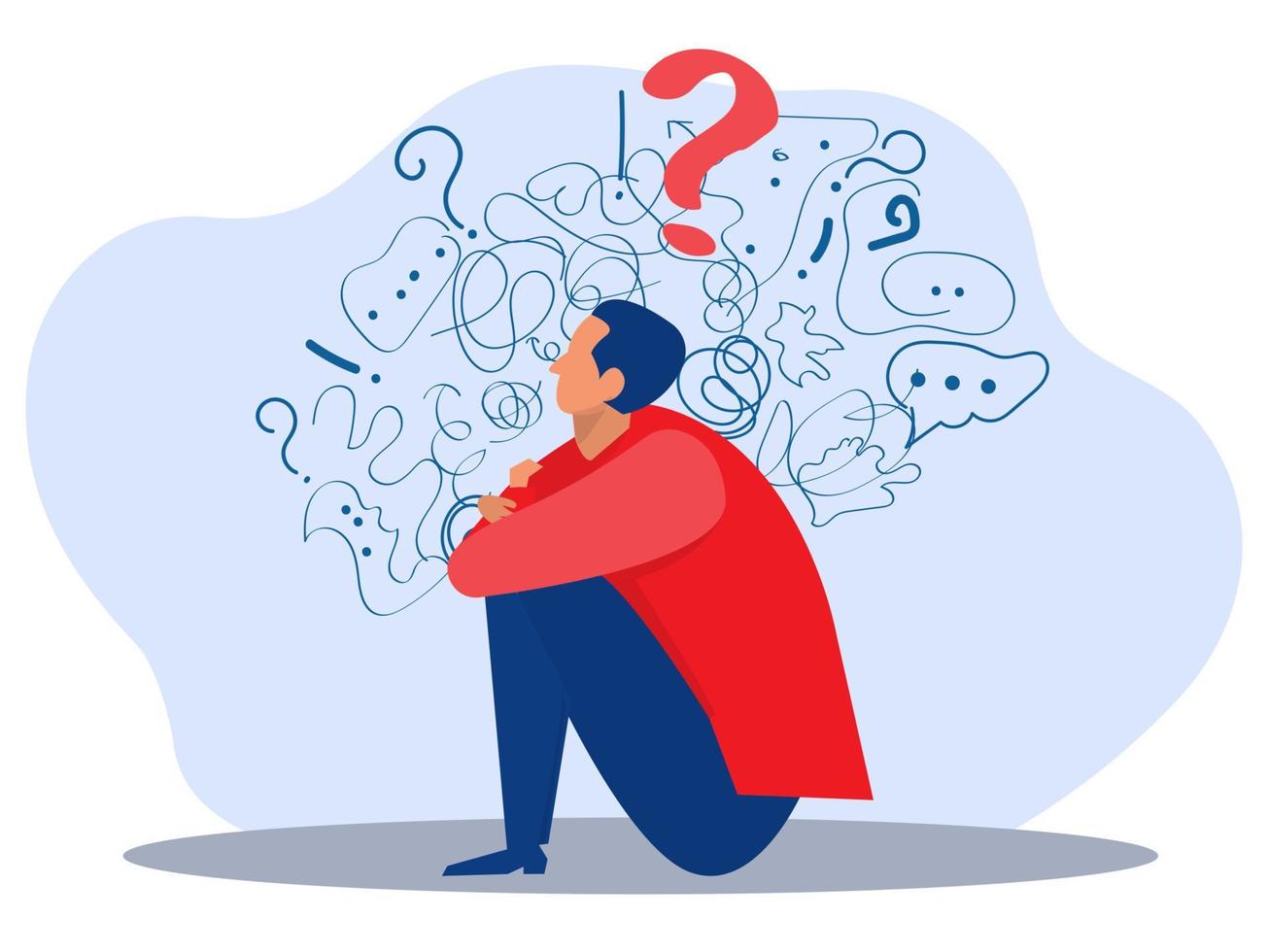
IV. The Trauma–Depression Connection
Not everyone who experiences trauma develops depression — yet the two conditions are so often linked that they can feel inseparable. Trauma shakes the foundation of safety and trust; depression settles in when the shattered pieces cannot be reassembled into a coherent whole. Understanding the bridge between trauma and depression helps us see why healing requires more than time — it requires intentional support, resilience, and sometimes treatment.
Why Trauma Often Leads to Depression
- Dysregulated Stress Response
- Trauma overactivates the body’s fight, flight, or freeze
- The stress hormone cortisol may spike unpredictably or flatten out entirely, leaving the nervous system exhausted.
- Over time, this dysregulation drains energy, sleep, and emotional balance — fertile ground for depression.
- Learned Helplessness and Loss of Agency
- When faced with overwhelming or repeated trauma, individuals may begin to feel that nothing they do matters.
- This sense of powerlessness — known as learned helplessness — is a core psychological bridge into depression.
- It strips away motivation, reinforcing the depressive cycle of passivity and hopelessness.
- Negative Self-Perceptions Seeded by Traumatic Events
- Trauma often leaves behind distorted self-beliefs: “I am broken,” “It was my fault,” “I can’t trust anyone.”
- These internalized messages shape identity and self-esteem, fueling depression long after the event is over.
Why Some Resist Depression After Trauma
If trauma is so destabilizing, why do some individuals emerge stronger rather than depressed? The answer lies in protective factors:
- Resilience and Meaning-Making
- People who can frame trauma as a challenge to be overcome, or as part of a meaningful narrative, often resist depression.
- Viktor Frankl, a Holocaust survivor, captured this in Man’s Search for Meaning: suffering can be endured if it is tied to purpose.
- Support Systems
- Strong social connections — family, community, mentors — act as buffers, preventing isolation and despair.
- Trauma in isolation breeds depression; trauma in community can breed healing.
- Genetic and Neurochemical Buffers
- Some individuals have genetic variations that protect against depression, such as more resilient serotonin transport systems.
- Neurochemical differences influence how quickly the brain recovers from stress.
Intergenerational Trauma
Trauma is not only personal; it can echo through generations.
- Family Patterns: Children of traumatized parents often inherit unspoken fears, hypervigilance, or emotional absence, shaping their own mental health.
- Epigenetic Effects: Trauma can alter how genes are expressed — silencing some, amplifying others — and these changes can be passed down biologically.
- Cultural and Societal Transmission: Collective traumas like slavery, colonization, or displacement leave imprints on entire communities, influencing depression rates decades or centuries later.
In essence, trauma and depression are often entwined because trauma disrupts the body’s stress systems, erodes agency, and distorts self-perception. Yet resilience, meaning, and connection can act as bridges away from depression — showing us that trauma need not dictate destiny.

V. The Brain’s Role: Trauma and Depression Circuits
Depression and trauma are not only emotional experiences — they are deeply embodied in the brain’s wiring. Neuroscience shows us that specific regions and networks orchestrate how we process danger, store memories, regulate emotions, and make sense of ourselves. When trauma strikes, these circuits become imbalanced; when depression sets in, they malfunction even further.
Understanding these brain regions helps dissolve the stigma that depression is “just in your head.” It is in your head — but in the form of rewired circuits, not weakness.
Amygdala: The “Alarm System”
- Acts as the brain’s smoke detector, constantly scanning for danger.
- In trauma survivors, the amygdala becomes hyperactive, leading to heightened fear, hypervigilance, and exaggerated startle responses.
- This hyperdrive state keeps individuals “stuck in survival mode,” unable to relax even in safe environments.
Hippocampus: The “Memory and Context Keeper”
- Responsible for placing experiences into context: distinguishing between past threats and present safety.
- Chronic trauma and prolonged cortisol exposure can shrink the hippocampus.
- Result: danger feels “timeless” — an old abuse or accident feels like it’s happening right now.
- This blurring of past and present intensifies flashbacks and contributes to depressive rumination.
Prefrontal Cortex (PFC): The “Executive”
- Governs reasoning, planning, and impulse control.
- In depression, the PFC’s activity is often dampened, weakening rational control over emotions.
- Without a strong “executive,” the overactive amygdala dominates — fear and sadness dictate reality unchecked.
- This imbalance explains why trauma survivors may “know” logically they are safe, but still feel constant danger.
Anterior Cingulate Cortex (ACC): The “Emotion Regulator”
- Acts as a bridge between emotion and cognition.
- Impairment here reduces the ability to calm oneself after emotional distress.
- Dysfunction in the ACC has been linked to both post-traumatic stress disorder (PTSD) and major depression, especially in emotional numbness and difficulty processing grief.
Default Mode Network (DMN): The “Self-Referencing System”
- The DMN lights up when the mind wanders inward — reflecting, remembering, or imagining.
- In depression, this network is overactive, trapping individuals in self-referential loops: “Why me? I am broken. Nothing will change.”
- Instead of creative reflection, the DMN fuels rumination and hopelessness.
The “Switch” Myth
- Trauma and depression are not controlled by a single on/off switch.
- Instead, they resemble a system of dimmer knobs and faulty wiring across brain circuits.
- Trauma tends to “lock” the amygdala switch on, keeping fear alive.
- Depression tends to “dim” the hippocampus and prefrontal cortex, weakening memory clarity and rational control.
- This explains why trauma survivors often oscillate between hyperarousal (panic, fear) and hypoarousal (numbness, withdrawal).
The Hopeful Truth: Neuroplasticity
- The brain is not static. Through therapy, mindfulness, medication, movement, and meaning-making, these circuits can be rewired.
- New connections can form, dormant ones can strengthen, and old trauma pathways can lose their grip.
- Healing does not mean erasing trauma — it means teaching the brain new ways to respond, restoring balance to circuits of fear, memory, and meaning.
In short: trauma and depression are brain circuit disorders, not character flaws. While they may feel like permanent switches flipped in the wrong direction, neuroscience proves that with the right interventions, the wiring can be reset toward healing.
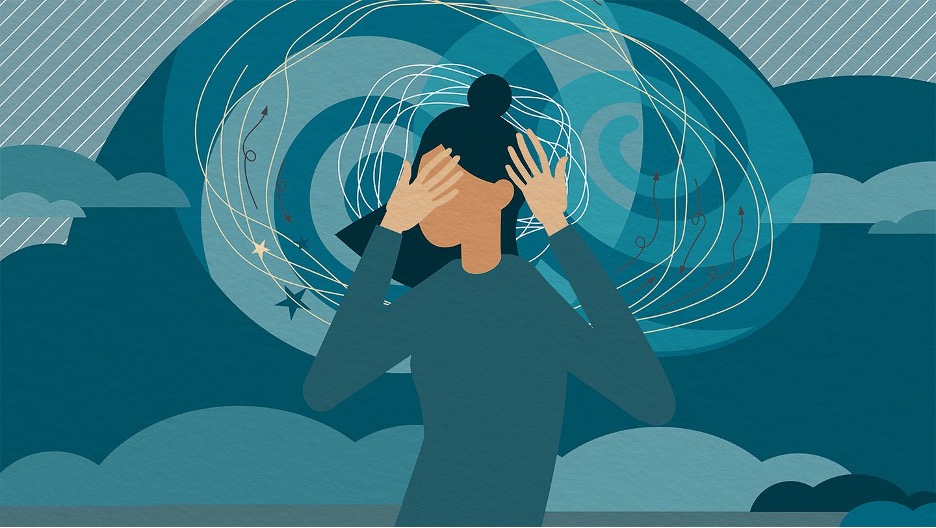
VI. Depression and Thought Patterns
If trauma shakes the foundations of emotional safety, depression alters the very architecture of thought. People often describe depression in contradictory ways — as an endless stream of painful thoughts or as a complete mental emptiness. This paradox captures the dual reality of depression: it is both too much and too little.
Overthinking (Rumination): Endless Cycles of Negative Thought
- Depression often hijacks the mind into a closed loop of rumination.
- The brain keeps replaying the same thought — “I’m not good enough,” “I ruined everything,” “The future is hopeless.”
- Unlike problem-solving, rumination has no forward motion. It is thinking without resolution.
- Neuroscientifically, this maps onto an overactive Default Mode Network (DMN), which traps the mind in self-referential negative loops.
Underthinking (Numbness): Cognitive Shutdown
- On the other side of the spectrum, depression can feel like mental fog or absence of thought.
- Individuals may struggle to concentrate, recall simple details, or generate new ideas.
- This cognitive slowdown arises from weakened prefrontal cortex activity, which makes creative or rational thinking feel inaccessible.
- The result: life feels flat, colorless, and devoid of meaning — not because there is nothing to think about, but because the brain cannot “light up” those thoughts.
Why Depression Feels Paradoxical
- Depression is not just sadness; it is a distortion of thought itself.
- The paradox emerges because the mind swings between two extremes:
- Too many painful thoughts → intrusive, repetitive, and self-critical.
- Too few constructive thoughts → a void where hope, curiosity, and imagination should be.
- This tug-of-war explains why depression is so exhausting: one part of the mind is burning out from overthinking, while another lies dormant.
Representation of Thoughts vs. Absence
- Depression is not simply the presence or absence of thoughts — it is a warping of the entire cognitive landscape.
- Hopeful, creative, and future-oriented thinking becomes muted.
- Negative, self-referential, and hopeless thinking becomes amplified.
- In effect, depression hijacks the brain’s “storytelling system,” editing reality into a bleak narrative while deleting the chapters of possibility.
In short: depression is not just a mood disorder; it is a thinking disorder — where the balance between mental noise and silence collapses. Recognizing this duality helps us see why treatment must aim at both calming intrusive thoughts and reigniting meaningful ones.
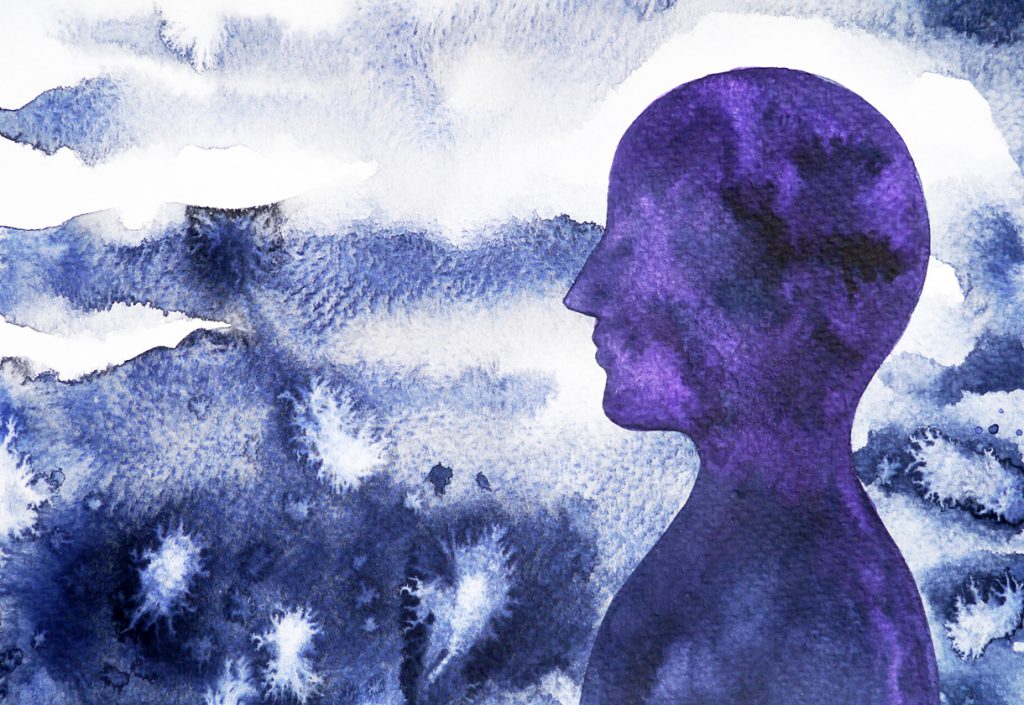
VII. Is Depression Age-Specific or Universal?
Depression is often stereotyped as a “youth problem” or an “old age crisis.” In reality, depression is universal, transcending age, gender, and culture. What changes across life stages is not its existence, but its triggers, expression, and biological underpinnings.
Children and Adolescents: The First Shadows
- Bullying and Peer Pressure: Emotional pain from exclusion or ridicule can manifest as withdrawal, irritability, or self-harm.
- Identity Struggles: Adolescence is a period of intense self-discovery. When confusion collides with lack of support, depression may emerge.
- Early Trauma: Abuse, neglect, or household dysfunction during childhood can prime the brain for lifelong vulnerability to depression.
- Unique challenge: Young people may not articulate sadness as “depression,” but show it as anger, rebellion, or apathy.
Adults: The Weight of Responsibility
- Financial Stress: Debt, unemployment, or career stagnation can erode self-worth and create chronic worry.
- Relationship Breakdowns: Divorce, betrayal, or toxic dynamics often precipitate depressive episodes.
- Career Burnout: Long-term stress without recovery time weakens resilience and blurs the line between stress and clinical depression.
- Unique challenge: Adults may normalize depression as “part of life,” delaying help until the condition worsens.
Elderly: Silent and Overlooked
- Loneliness: Isolation after retirement, loss of social circles, or geographic distance from family is a powerful risk factor.
- Illness and Disability: Chronic pain or degenerative conditions (e.g., Parkinson’s, Alzheimer’s) can feed hopelessness.
- Grief: Loss of partners, siblings, or lifelong friends leaves many elderly vulnerable to prolonged depressive states.
- Unique challenge: Symptoms in seniors are often dismissed as “just aging,” when in fact treatable depression is present.
Biological Age-Related Shifts
- Hormonal Milestones:
- Puberty, postpartum changes, menopause, and andropause alter brain chemistry, creating windows of vulnerability.
- Example: postpartum depression reflects how hormonal shifts interact with stress, identity, and expectations.
- Inflammation and Brain Aging:
- With age, the body’s baseline inflammation rises (“inflammaging”), which can influence mood-regulating neurotransmitters.
- Age-related shrinkage of the hippocampus and prefrontal cortex increases susceptibility to depression in later life.
Conclusion: Depression Across the Lifespan
Depression is not bound to one age group — it is a universal condition. However, its face changes depending on life stage: rebellion in teens, burnout in adults, loneliness in the elderly. Recognizing these age-specific risk factors is vital for timely intervention.
In short: depression is everywhere, but it does not look the same everywhere. To fight it effectively, we must learn its many disguises across the lifespan.
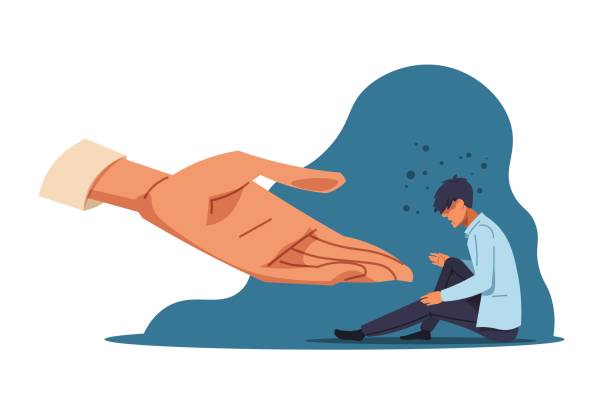
VIII. How to Handle Trauma and Prevent Depression
Trauma does not automatically lead to depression. What matters most is how we process it, how soon we address it, and the protective resources we build around ourselves. Left unacknowledged, trauma buries itself in the body and mind, silently shaping mood and behavior. Addressed early and wisely, it can become a source of strength and resilience rather than despair.
Early Processing: Facing Events Before They Harden
- Trauma thrives in silence and denial. Acknowledging what happened — even privately in writing or therapy — prevents the experience from becoming a hidden wound.
- Healthy processing may involve:
- Narrative building: telling the story in safe contexts helps the brain file the event as “past,” reducing intrusive replays.
- Therapeutic support: trauma-focused therapies (e.g., EMDR, CBT, somatic experiencing) provide structured ways to integrate painful memories.
- The earlier trauma is processed, the less likely it is to morph into chronic depression.
Resilience-Building Practices
Resilience is not an inborn trait; it is a muscle that can be strengthened through regular practices.
- Mindfulness and Meditation
- Calms the amygdala, reactivates the prefrontal cortex, and increases present-moment awareness.
- Simple breathwork or grounding practices interrupt spirals of anxiety before they deepen into depression.
- Journaling and Expressive Arts
- Writing, painting, or music-making transforms raw emotions into structured expression.
- This externalization reduces the “mental load” and creates distance between the self and the trauma.
- Physical Exercise
- Movement literally discharges stress hormones from the body.
- Aerobic exercise boosts endorphins and BDNF (Brain-Derived Neurotrophic Factor), promoting neuroplasticity and mood repair.
- Even walking in nature combines physical release with grounding benefits.
Protective Layers: Building Safety Nets
- Social Support: Trusted friends, family, or mentors provide emotional validation and perspective.
- Community Networks: Religious groups, NGOs, clubs, or volunteer circles expand belonging and reduce isolation.
- Purpose and Meaning: Engaging in causes larger than oneself acts as a powerful buffer. When trauma is integrated into a meaningful narrative, it loses its grip.
Healthy Boundaries: Guarding Mental Space
- Trauma recovery can be sabotaged by ongoing exposure to toxic relationships or unsafe environments.
- Establishing clear boundaries — saying no, limiting contact, leaving abusive settings — is not selfish; it is self-preservation.
- Boundaries free up emotional energy for healing instead of constantly patching new wounds.
In short: preventing trauma from spiraling into depression requires a combination of early acknowledgment, daily resilience practices, social and spiritual buffers, and strong personal boundaries. Healing is not about erasing pain but about creating enough inner and outer support that pain no longer defines the future.

IX. Recovery and Healing Pathways
Depression and trauma may alter the brain, but they do not define a life sentence. Recovery is possible — not always quick, not always linear, but profoundly real. Healing unfolds across multiple pathways: medical, psychological, lifestyle, and spiritual. No single path works for everyone; instead, recovery is a mosaic of interventions, tailored to the individual’s needs, biology, and beliefs.
Therapy-Based Interventions
- Cognitive Behavioral Therapy (CBT)
- Helps individuals identify distorted thinking patterns and replace them with more balanced perspectives.
- Particularly effective for breaking cycles of rumination.
- Trauma-Focused Therapy (EMDR, Somatic Experiencing)
- EMDR (Eye Movement Desensitization and Reprocessing): reduces the emotional intensity of traumatic memories by reprocessing them while stimulating bilateral brain activity.
- Somatic Experiencing: teaches awareness of bodily sensations to release trauma “stored in the body.”
- Narrative Therapy
- Encourages individuals to re-author their trauma stories.
- Shifts the identity from “I am broken” to “I survived and I am more than my wounds.”
Medical Interventions
- Antidepressants and Mood Stabilizers
- SSRIs, SNRIs, and other medications can regulate neurotransmitters (serotonin, dopamine, norepinephrine).
- Often necessary in moderate-to-severe cases where daily functioning is impaired.
- Brain Stimulation Techniques
- TMS (Transcranial Magnetic Stimulation): non-invasive, reactivates underactive brain regions.
- ECT (Electroconvulsive Therapy): despite stigma, highly effective for severe, treatment-resistant depression.
Lifestyle Medicine
- Nutrition for Mental Health
- The gut–brain axis influences mood through microbiota and neurotransmitter production.
- Diets rich in omega-3 fatty acids, whole grains, leafy greens, and probiotics show measurable benefits.
- Sleep Hygiene and Circadian Rhythm
- Regular sleep patterns restore neurotransmitter balance and stress resilience.
- Blue-light reduction before bedtime and consistent routines improve recovery.
- Digital Detox and Reduced Overstimulation
- Constant screen exposure amplifies comparison, stress, and disrupted focus.
- Mindful use of technology reduces anxiety and supports emotional regulation.
Spiritual and Philosophical Dimensions
- Meditation, Yoga, and Prayer
- Cultivate stillness, emotional regulation, and deeper connection to self and others.
- Yoga integrates breath, movement, and mindfulness — resetting stress circuits.
- Silence Retreats and Contemplative Practices
- Extended silence allows unresolved emotions to surface and be processed.
- Can reframe trauma as a passage toward wisdom.
- Existential Reframing
- Inspired by thinkers like Viktor Frankl, reframing suffering as a path to meaning transforms despair into resilience.
Future Frontiers
- Psychedelic-Assisted Therapies
- Research on psilocybin and MDMA shows promise in breaking depressive and trauma loops by fostering profound emotional breakthroughs.
- Epigenetic Therapies
- Interventions designed to “reset” trauma-related genetic expressions, preventing intergenerational transfer of vulnerability.
- Neurofeedback and Brain–Computer Interfaces
- Allow individuals to “see” their brain activity and train it toward healthier patterns.
- Early evidence suggests strong potential in regulating mood and attention.
In short: recovery is multi-dimensional. Healing begins when science and spirit, medicine and meaning, biology and community all work together. Depression is real, but so is recovery — not as a return to who you were before trauma, but as a transformation into someone wiser, stronger, and more whole.

X. Conclusion
Key Insight
Depression and trauma are deeply intertwined — not as passing moods, but as disruptions in brain circuits, thought patterns, and lived experiences. Yet they are not life sentences. With awareness, therapy, lifestyle interventions, and supportive communities, healing is not only possible but also transformative. Trauma does not have to define the future; it can be integrated into a larger story of growth and meaning.
Forward Vision
It is time we shift our collective lens:
- From seeing depression purely as a disease to seeing it as a signal — a call for rest, rebalancing, and healing.
- From isolating those in pain to creating ecosystems of support where resilience, purpose, and belonging are cultivated.
- From shame and silence to open dialogue that recognizes mental health as integral to human flourishing.
Depression is not just an individual struggle; it is a societal opportunity to reimagine how we nurture well-being, compassion, and inclusive growth.
Participate and Donate to MEDA Foundation
At the MEDA Foundation, we believe healing expands when communities take responsibility for one another. Our mission is to create ecosystems of mental health, employment, and inclusive well-being — where individuals are not merely surviving, but thriving with dignity and purpose.
Your participation and support enable us to:
- Offer awareness programs on trauma and depression.
- Provide pathways for employment and self-sufficiency.
- Build inclusive communities where no one is left behind.
🌱 Join us in this vision. Participate. Donate. Help us build futures of resilience and love.
Book References
- The Body Keeps the Score – Bessel van der Kolk
- Lost Connections – Johann Hari
- Feeling Good – David D. Burns
- Why Zebras Don’t Get Ulcers – Robert Sapolsky
- Man’s Search for Meaning – Viktor E. Frankl
- The Deepest Well – Nadine Burke Harris
In essence: Trauma may scar, depression may silence, but neither can extinguish the human capacity for healing, meaning, and connection. The brain rewires, the heart relearns, and the spirit remembers: we are built not just to endure, but to transform.









